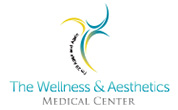Knee Tendon Tear and Tendonitis Treatment in La Vernia, TX

If pain, inflammation, or weakness is making it difficult or impossible to straighten your knee, you may have tendonitis, or, you may have torn your knee tendon. Knee injuries usually occur after a hard fall, sudden impact, or stressful twist, and can impinge on your ability to stand, walk, exercise, and enjoy a healthy, balanced lifestyle.
Regenerative medicine offers one of the most potent knee treatments known to science – stem cell therapy – which may repair knee tendons without invasive surgeries or potentially addictive medications.
To speak about stem cell treatment for your knee tendon tear and tendonitis with a highly trained, compassionate provider in La Vernia, call (210) 941-4815 or contact The Wellness & Aesthetics Medical Center online.
What are the symptoms of knee tendon tears and tendinitis?
Common symptoms of these conditions include:
- a popping noise in your knee at the time of injury, followed by severe pain
- extreme pain or inability to move your knee
- walking with a limp and limited mobility
- pain, swelling, and tenderness in your knee
While knee injuries are more common among people who participate in strenuous physical activities like sports or vigorous physical labor, a sudden fall, hard impact, or car accident injury can also damage the front of your knee.
How is knee tendon tear and tendonitis treated?
Unlike risky surgeries or potentially dangerous medications, stem cell therapy taps your body’s own regenerative potential to reduce or eliminate your pain and stimulate your tendons to heal naturally – cell by damaged cell.
A recent report from Northwestern Memorial Healthcare states that National Football League (NFL) players who receive knee surgery due to a tendon tear are 50% less likely to return to play. The report explains that half of athletes choosing knee surgery experience significant declines in performance, sometimes to the point of never playing the sport again, because they never recover completely from their knee tendon tear even after a successful surgery. Stem cell injections may help you avoid the risk and downtime of surgery because, unlike invasive procedures, stem cell therapy taps into your own body’s natural regenerative abilities.
As your injured cells synergize with our mesenchymal stem cells they may reduce or eliminate your pain, regenerate your tissue, and revive your range of movement, allowing you to enjoy your exercise routine and leisure activities again.
Unlike surgery, which removes tissue and bone from your body, regenerative medicine harvests live cells. These are injected directly into your pain site, stimulating your own cells to regenerate themselves. Your provider will use live x-ray or ultrasound imaging for guidance, so the injection will be placed precisely into your affected area.
The live-nucleated cells your provider delivers to your tissue may continue producing human growth factors for weeks, sometimes even months. How long they’ll remain active in your case will depend on your age, body type, genetics, and injury severity. Treatment success rates will also vary depending on all these factors, as they do with all medical procedures.
How do stem cells regenerate tissue?
Injured cells in your tendons and joints send out signals. Stem cells respond to those signals, migrating to the injured tissue and releasing proteins that nourish and stimulate your own cells to begin regenerating.
Stem cells dock next to your cells and release:
- growth factors
- cytokines, and
- chemokines
These potent proteins may then: activate T-cells, open up your blood vessels and form new ones, move cells out of your blood vessels and into the tissues surrounding them, stimulate your cells to regenerate your tissue, inhibit your inflammation, and regulate your immune system.
Where do these live stem cells come from?
We process the umbilical cord blood of healthy newborns. If a pregnant woman decides not to keep and store her unborn child’s umbilical cord, she may donate it. After signing an informed consent form, her practitioner will do a blood test and conduct a medical and social history review. If the new mother meets all donor eligibility requirements, after she gives birth, the umbilical cord blood is collected in a sterile collection bag and sent to the lab.
The cord blood is processed within 48 hours using proprietary methods. A sample of the finished product is tested by an independent third-party lab for sterility. Only after all lab reports have passed the regulatory requirements can the umbilical cord stem cells be distributed.
Are umbilical cord stem cells FDA approved?
The FDA recently confirmed there is only one registered and approved stem cell product on the market: umbilical cord blood-derived hematopoietic progenitor cells (blood forming stem cells) used for certain indications. While there is enormous promise in stem cell therapies, and thousands of ongoing experiments trying to establish efficacy, stem cell treatments do not yet meet the FDA’s scientific approval standard.
Practitioners tapping into this enormous promise of stem cells for any therapeutic use must exercise their professional judgment and expertise. We urge anyone embarking on the use of stem cell therapies to consult the national health data bases to evaluate current clinical trial information, and the FDA’s website on human tissue, to get its current therapy evaluations.
In 2018 the FDA’s commissioner and research director reported that the agency will be incorporating some “new concepts for how small investigators and firms can seek and meet the approval standard for products through efficient expedited pathways.” You can keep up with latest developments on the FDA’s website.
How many cells does it take to treat my knee tendon tear or tendinitis?
Worldwide clinical research and experience over almost 20 years has given us some effective parameters for various types of injury. After examining and accessing the nature and severity of your injury, medical history, and general health, your medical provider will decide how many million cells are needed for fast, effective treatment.
Is it normal to have an inflammatory response after my injection?
Experiencing an inflammatory response after a stem cell injection is common. This is not because your body is rejecting the cells. It may actually be a positive sign that the live cells are creating a healing response.
The degree of inflammatory response to our live-nucleated cells can vary based on:
- the levels of IL-6 within your joint or tissue
- the severity of damage and current inflammation in your joint
- PRP therapy in conjunction with stem cell injection may increase the probability of an inflammatory response
Will I be given an anesthetic?
You may be given a small amount of local anesthetic to numb the needle pathway on your skin. However, your healthcare provider will not apply large amounts of local anesthetic into the area being treated. Studies have shown that doing so may damage the nucleated cells.
How long does it take to get relief?
Pain relief typically begins immediately after your treatment. Regeneration time varies depending on the severity of your injury and your ability to follow post treatment care, along with your rehabilitation program to strengthen affected areas.
Who can benefit from stem cell therapy?
Any patient desiring effective pain relief and healing may be a stem cell injection candidate. If you’ve endured painful surgeries and taken prescription medication without experiencing the relief you desire, stem cell therapy may be the treatment you’ve been searching for.
Speak with a stem cell therapy specialist to discuss your current condition, medical condition, and treatment options in greater detail.
What are the risks or side effects of stem cell injections?
As with any other injection procedure, there is a very small risk of bacterial infection not associated with the injected cells. If you experience severe pain, bleeding, or swelling at your injection site, or if you experience fever, nausea, dizziness, vomiting, or any other concerning symptoms, don’t wait—call your medical provider or seek emergency medical care right away.
Reserve Your Appointment Now
Our trained and experienced providers have already saved countless pain-plagued patients from expensive and potentially dangerous surgeries and procedures. Now they’re prepared to customize a stem cell therapy plan for you.
To speak with a stem cell specialist regarding knee tendon tear and tendonitis today in La Vernia, call (210) 941-4815 or contact The Wellness & Aesthetics Medical Center online.
The Wellness & Aesthetics Medical Center
Address
540 Oak Centre DrSuite 114
San Antonio, TX 78258
(210) 941-4815
www.twaamc.com
Hours
Mon:
9:00 am - 5:00 pm
Tue:
9:00 am - 5:00 pm
Wed:
9:00 am - 5:00 pm
Thu:
9:00 am - 5:00 pm
Fri:
9:00 am - 5:00 pm
Sat:
Closed
Sun:
Closed




